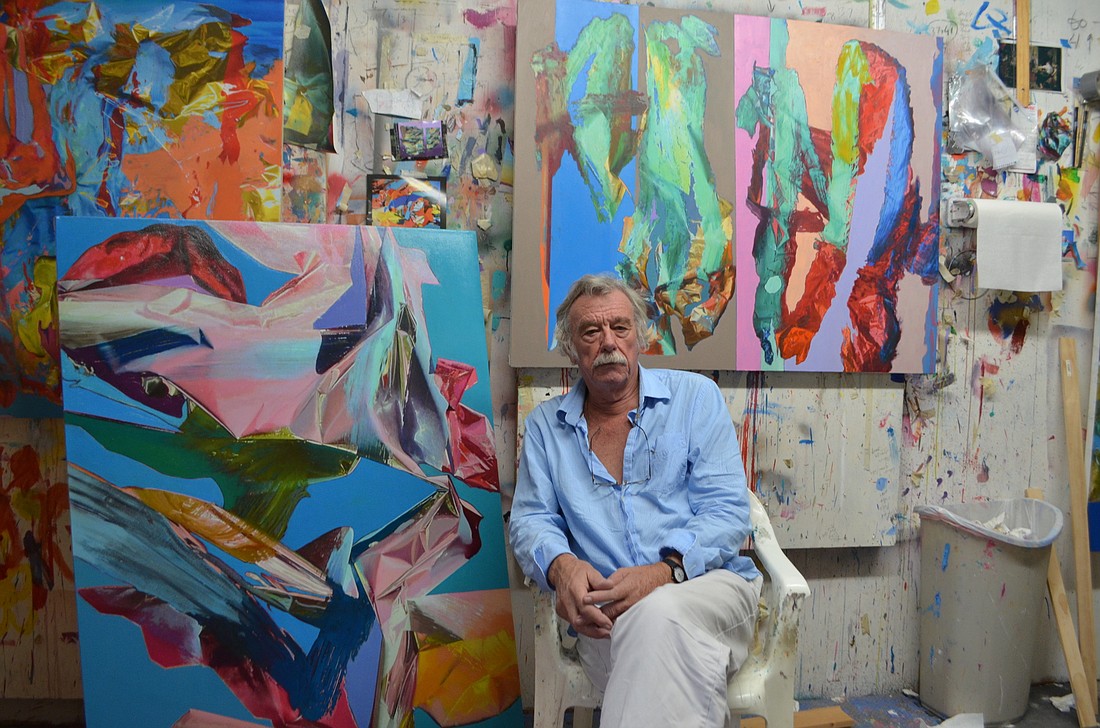- July 5, 2025
-
-
Loading

Loading

Hugh Davies’ journey into life as an artist didn’t begin in a typical fashion. He wasn’t transfixed by a masterpiece hung in a museum. He didn’t have an influential art teacher. No, for Davies it all started with a piece of day-old bread.
Davies, 68, grew up just outside of London, where, as a 7-year-old, he would accompany his grandfather on walks around the countryside. Armed with a stool, an easel and a watercolor set, his grandfather would paint the English fields and villages. Admittedly, the artist and Ringling College fine art professor recalls that his grandfather wasn’t the best painter.
But during one painting session, he pulled something unexpected out of his leather art supply satchel: a piece of bread. He slapped his watery blue sky with the bread, and an unremarkable field of blue was transformed into a textured skyline.
“I thought it was genius,” says Davies. “That was the earliest time I could remember someone painting something, and it seemed so miraculous.”
Inspired by that moment, he went on to study art and become a professional painter and teacher, and he taught in schools throughout his native England. Eventually, he moved to Sarasota to continue his teaching at Ringling College of Art and Design.
Starting Thursday and running through Jan. 16, Davies will have a solo show, “Decade: Selected Paintings by Hugh Davies,” at Art Center Sarasota, in which he’ll display paintings from his first 10 years living and working in Sarasota.
His recent work reflects that moment with his grandpa, nearly 60 years ago. Unlike his grandfather’s amateur watercolors, Davies’ expressive abstract works are like something out of a neon, candy-coated dream. He credits his inspiration for his colorful creations to the naturally occurring bright landscapes of his new Florida home — a refreshing contrast to his native England where he moved away from in 2004 to escape from his country’s drab weather and totake a job at Ringling College of Art and Design.
In his converted garage studio, Davies uses multiple tools, scrapers and paint thickeners to add texture, layers and gravity to his labyrinth of paints. Surrounded by nearly completed paintings and years’ worth of paint splatter, he says he’s found a sense of stability in both his work and his teaching.
“I want to introduce my students and future artists not only why they want to paint but also the technical means to achieve their visions,” says Davies. “What do you want to paint, and how are you going to do it?”